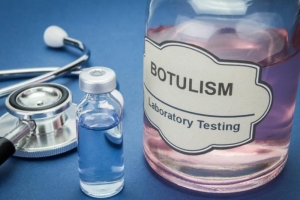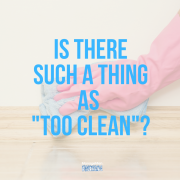Is There Such a Thing as “Too Clean”?
A report released earlier this week by the Royal Society for Public Health (RSPH), a London-based independent, multi-disciplinary charity dedicated to the improvement of the public’s health and wellbeing, affirmed that the there is no such thing as being “too clean.” According to an article in the Telegraph, the report came after organizers of a prominent festival encouraged attendees to conduct “strip washes” rather than take full showers in order to reduce the environmental impact of the festival.
So, is there such a thing as being “too clean”? A lot of this goes back to the British epidemiologist David Strachan, who, in the late 1980s, developed what was called the “Hygiene Hypothesis.” His hypothesis suggested that exposure to infections during childhood would amplify defenses against allergies as the child grew older. In short, the dirtier the environment growing up, the better chance the child stood later in life to ward off allergies.
It’s easy to see why there’s some pushback—the business of “clean” is a booming industry. The most recent data available forecasts that the household cleaning products generates more than $61 billion each year. We’re continually being sold on hand sanitizers and all-in-one products that promise to “kill 99.9% of germs and bacteria.”
While some see that as more of a marketing strategy than reality, readers of this blog know that cleaning — and hygiene — are critical to controlling the spread of dirt, bacteria and infectious diseases.
Professor Sally Bloomfield, from the London School of Hygiene and Tropical Medicine, said that much confusion exists as to the difference between cleaning and hygiene—cleaning your hands after touching a dog or pet is different than cleaning out the pet’s living areas.
“Whereas cleaning means removing dirt and microbes, hygiene means cleaning in the places and times that matter—in the right way—to break the chain of infection whilst preparing food, using the toilet, etc.”
Professor Sally Bloomfield, London School of Hygiene and Tropical Medicine
So is there such a thing as “too clean?” The answer is no—the reality is quite the opposite. The absence of thorough and proper cleaning can have catastrophic results under the right conditions.
According to the World Health Organization, infectious diseases kill more than 17 million people a year. And the Texas Biomedical Research Institute reports that 30 new diseases have emerged in the last 20 years.
So not only is the act of cleaning important, but HOW we clean and disinfect is equally as important in helping improve health outcomes for both cleaning workers and building occupants. There are different levels of cleanliness, and it when it comes to protecting people who live, work and visit buildings, one cannot be “too clean.”

We’ll dig more into the importance of microbiology training for cleaning workers in our next post, but for now, here are the 27 of the Most Common Diseases Related to Cleaning:
Amebiasis
Botulism
Campylobacter
Chickenpox
Cholera
Cryptosporidiosis
Diphtheria
E.Coli
Hantavirus
Hepatitis
HIV/AIDS
Influenza
Legionellosis
Malaria
Measles
Meningitis
Meningococcal
Pertussis
Plague
Polio
Tuberculosis
Rotavirus
Rubella
Salmonellosis
Staph/MRSA
Streptocucucua
Typhoid Fever
Want to learn more about training workers on microbiology fundamentals? Check out our comprehensive reference guide “Microbiology for Cleaning Workers Simplified” by John Walker and Jeffery Campbell, Ph.D.
Further Reading: If you’re interested in how cleaning has shaped modern culture, you might want to check out “Chasing Dirt: The American Pursuit of Cleanliness” by Suellen Hoy.



